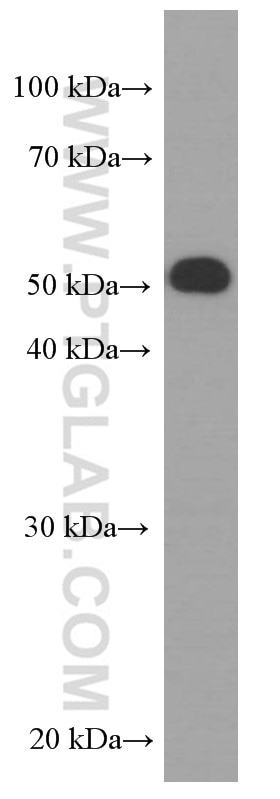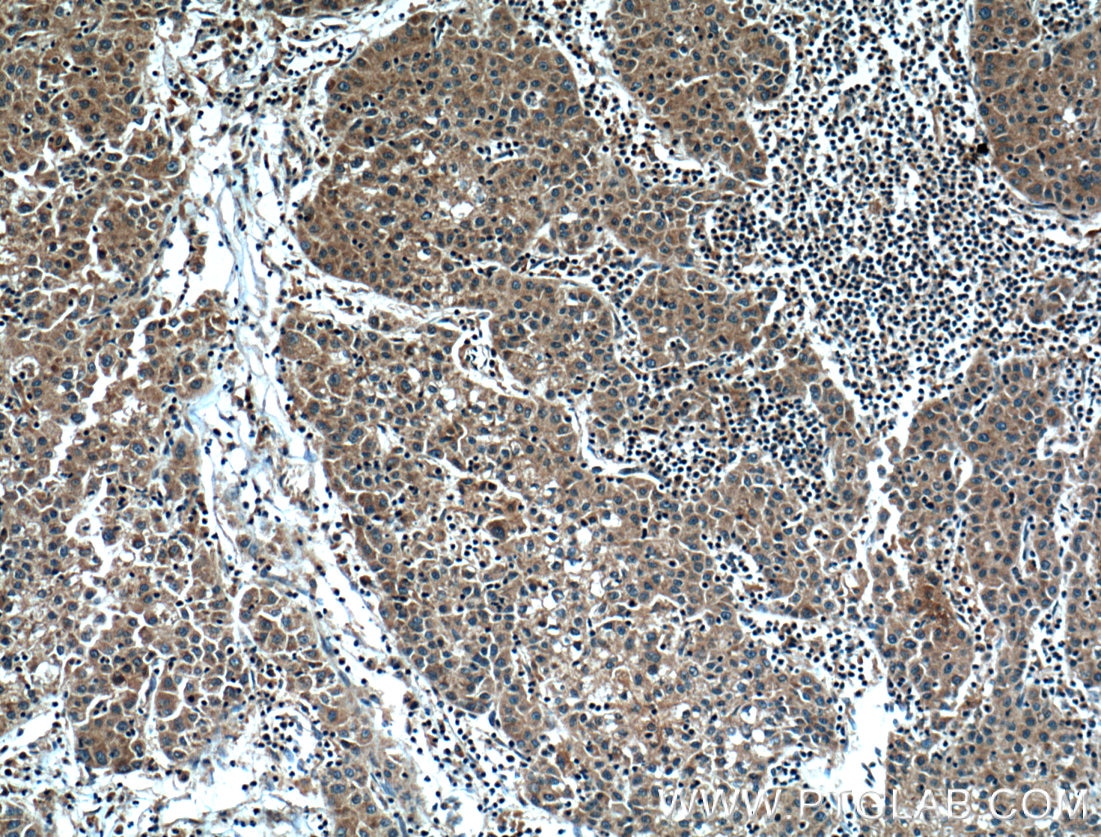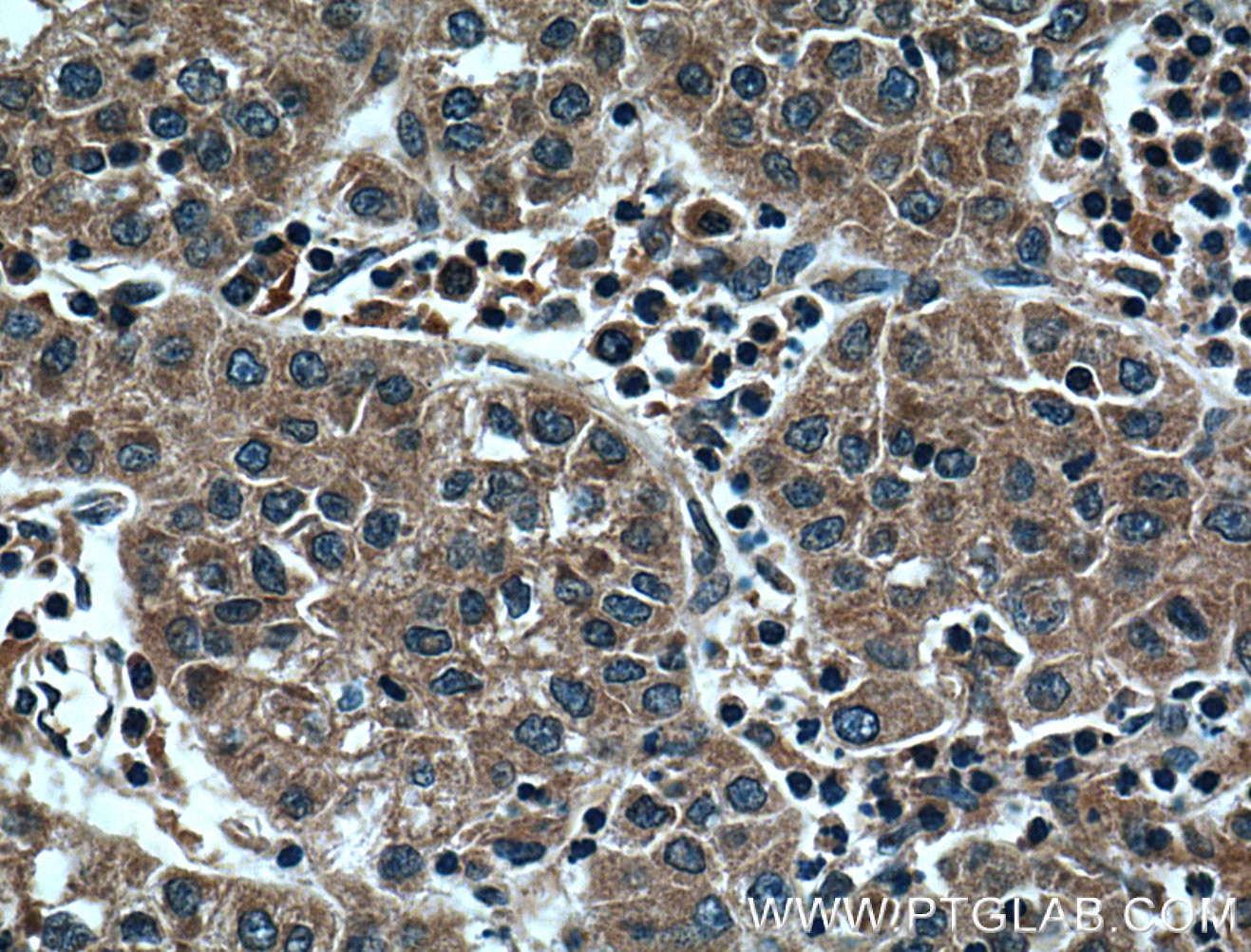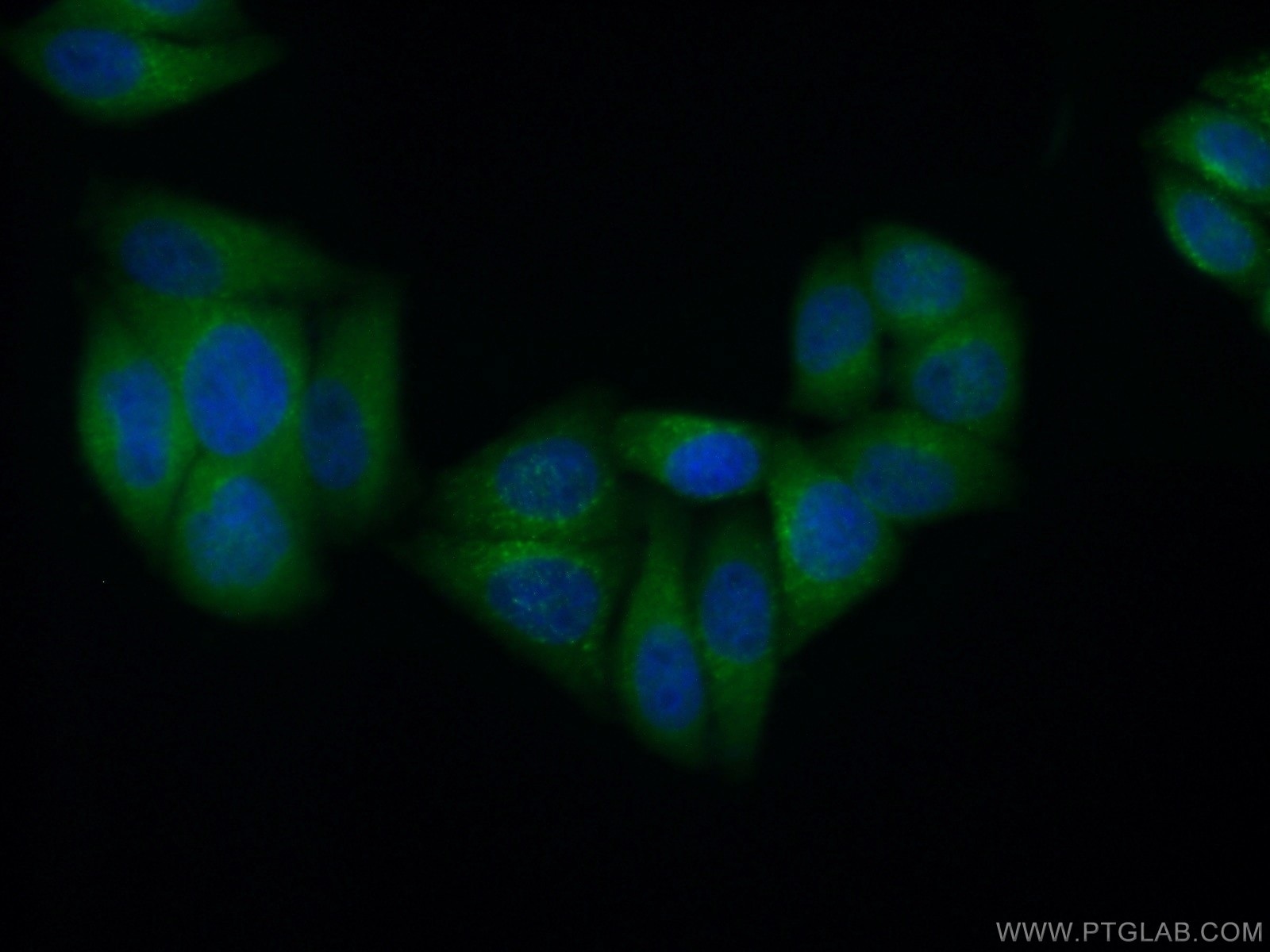Validation Data Gallery
Tested Applications
| Positive WB detected in | HepG2 cells |
| Positive IHC detected in | human liver cancer tissue Note: suggested antigen retrieval with TE buffer pH 9.0; (*) Alternatively, antigen retrieval may be performed with citrate buffer pH 6.0 |
| Positive IF/ICC detected in | HepG2 cells |
Recommended dilution
| Application | Dilution |
|---|---|
| Western Blot (WB) | WB : 1:500-1:2000 |
| Immunohistochemistry (IHC) | IHC : 1:200-1:1000 |
| Immunofluorescence (IF)/ICC | IF/ICC : 1:50-1:500 |
| It is recommended that this reagent should be titrated in each testing system to obtain optimal results. | |
| Sample-dependent, Check data in validation data gallery. | |
Published Applications
| KD/KO | See 1 publications below |
| WB | See 3 publications below |
| IHC | See 1 publications below |
| IF | See 1 publications below |
Product Information
66226-1-Ig targets HPSE in WB, IHC, IF/ICC, ELISA applications and shows reactivity with human samples.
| Tested Reactivity | human |
| Cited Reactivity | human, mouse |
| Host / Isotype | Mouse / IgG1 |
| Class | Monoclonal |
| Type | Antibody |
| Immunogen | HPSE fusion protein Ag10067 相同性解析による交差性が予測される生物種 |
| Full Name | heparanase |
| Calculated molecular weight | 543 aa, 61 kDa |
| Observed molecular weight | 50 kDa |
| GenBank accession number | BC051321 |
| Gene Symbol | HPSE |
| Gene ID (NCBI) | 10855 |
| RRID | AB_2881617 |
| Conjugate | Unconjugated |
| Form | Liquid |
| Purification Method | Protein A purification |
| UNIPROT ID | Q9Y251 |
| Storage Buffer | PBS with 0.02% sodium azide and 50% glycerol , pH 7.3 |
| Storage Conditions | Store at -20°C. Stable for one year after shipment. Aliquoting is unnecessary for -20oC storage. |
Background Information
HPSE(Heparanase) is also named as HEP, HPA, HPA1, HPR1, HPSE1, HSE1 and belongs to the glycosyl hydrolase 79 family. It is a endoglycosidase that cleaves heparan sulfate proteoglycans (HSPGs) into heparan sulfate side chains and core proteoglycans. HPSE is essential in the disassembly of the extracellular matrix (ECM) by invading cells. It has 3 isoforms produced by alternative splicing with the molecular weight of 61 kDa, 55 kDa and 53 kDa. The full length protein has six glycosylation sites. The cleavage of the 65 kDa form leads to the generation of a linker peptide, and 8 kDa and 50 kDa products. The active form, the 8/50 kDa heterodimer, is resistant to degradation and glycosylation of the 50 kDa subunit appears to be essential for its solubility.
Protocols
| Product Specific Protocols | |
|---|---|
| WB protocol for HPSE antibody 66226-1-Ig | Download protocol |
| IHC protocol for HPSE antibody 66226-1-Ig | Download protocol |
| IF protocol for HPSE antibody 66226-1-Ig | Download protocol |
| Standard Protocols | |
|---|---|
| Click here to view our Standard Protocols |
Publications
| Species | Application | Title |
|---|---|---|
Cells A New Synthesized Dicarboxylated Oxy-Heparin Efficiently Attenuates Tumor Growth and Metastasis | ||
Mar Drugs A Marine λ-Oligocarrageenan Inhibits Migratory and Invasive Ability of MDA-MB-231 Human Breast Cancer Cells through Actions on Heparanase Metabolism and MMP-14/MMP-2 Axis. | ||
Front Oncol Heparanase Promotes Tumor Growth and Liver Metastasis of Colorectal Cancer Cells by Activating the p38/MMP1 Axis.
|



